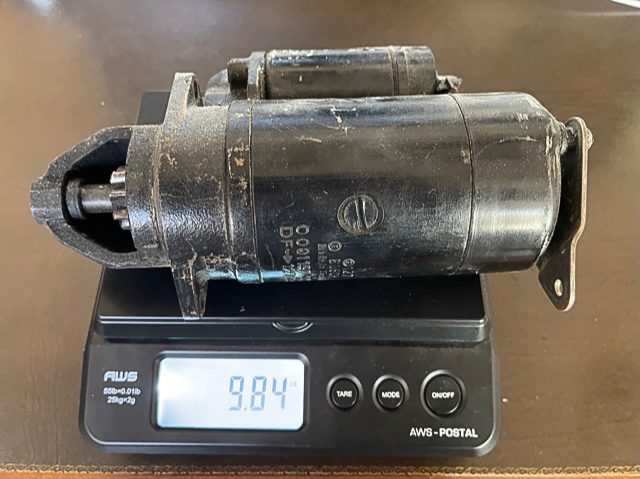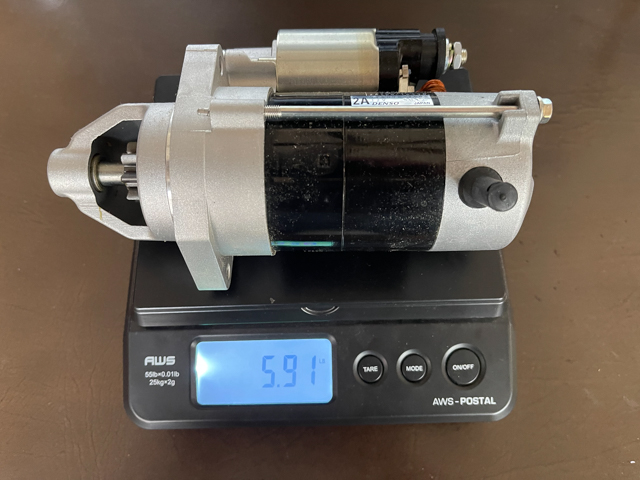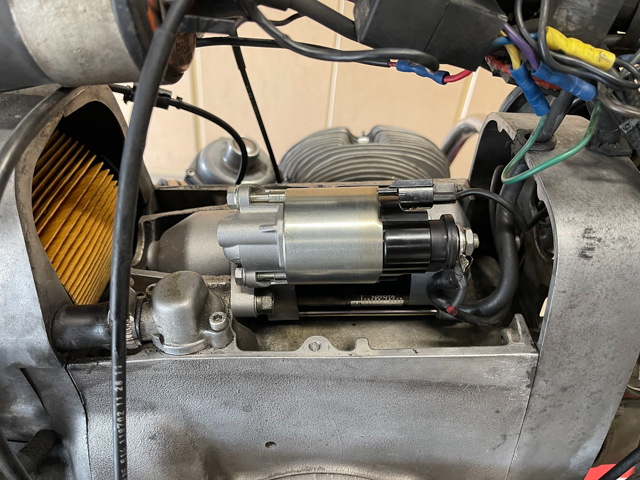Japan rules.
BMW airheads first saw the addition of electric starters in 1970, and still came fitted with kick starters as a back-up. These were deleted for the 1975 year but the original owner of my 1975 BMW R90/6 had one fitted at the factory before importing the machine. It’s pretty useless on a cold motor, but works OK with a warm one if the whole macho scene is your thing.
To say that the massive Bosch starter in my bike is an enthusiastic participant when it comes to getting sparks and explosions going would be an overstatement. It always struggled a bit getting over the compression hump with a cold engine and things deteriorated further in recent months, so much so that I would use the kicker to position the motor just past compression to give the ailing German starter a running start at things, so to speak. But clearly, a rebuild was indicated, reverting to a properly tuned but still weak willed Bosch original, for some $250.
Now engineers are always looking for something better though I do rather struggle with the idea of installing non-OEM parts in my classic machine. I corresponded with a riding friend explaining that there is a Japanese alternative but I felt rather uncomfortable mixing races, if you know what I mean. No problem with Japanese bikes; in fact they are the most reliable and well made machines out there. “Well”, he replied somewhat caustically, “they seem to have got on just fine in the last World War, so I wouldn’t worry about it”. OK!
Why Japanese? Well the Bosch starter in my bike is 1970’s technology – probably more like 1950’s, truth be told. And aftermarket places have been modifying a Nippondenso/Toyota starter with the right Bendix (the geared teeth which the solenoid advances into the flywheel when the starter button is depressed) along with the correct nose cone for aforesaid Bendix, which allow the whole thing to fit just so in the innards of the bike.
The Bosch unit was discontinued many years ago, replaced with a French Valeo which used to shed its magnets destroying the starter. That problem was fixed and manufacture moved to Poland, a nation not renowned for its engineering prowess, and a new one can be had for $300 with the correct 8-tooth Bendix. BMW later reduced gearing – acknowledgment of the marginal power of the Bosch – to 9 teeth but that would also dictate changing the flywheel, which is overkill for a little more turning force.
Over the years the Nippondenso variously used a Toyota truck starter, a forklift starter and a small car starter, and it’s the latter I decided to pony up $350 for after reading of some 20 years’ good experience with the Japanese part from any number of Airhead riders. Toyota trucks and cars routinely run the distance to the moon and back several times, so there’s reason to be confident here. I estimate that the Bosch starter had some 2,500 starts under its belt.
The Nippondenso is 1995 technology, this model being from a 1995-97 Toyota Corolla 1.6 liter four banger. If it can spin a four cylinder engine, I reckoned it should make mincemeat of the twin in my bike. Weight dropped significantly:

A porker at nearly 10 lbs.

Modern materials see a big drop in weight.
The lighter weight means that the alignment bracket on the Bosch starter can be dispensed with.

1995-97 1.6 liter Toyota Corollas come with these.
Installation is a breeze. After disconnecting both battery terminals the starter cover comes off in two minutes – two Allen bolts – the two starter retaining bolts are removed (wobbly extensions come in useful in the tight confines here), three electrical connections are disconnected and the new starter is installed. The Nippondenso used threaded eyelets and uses the stock 13mm metric bolts to hold it in place. Being a belt and suspenders type I also installed the washers and nuts which are used with the original.

Installed, a perfect fit.
All sorts of claims are made for the lower power draw and the superior cranking power of the Nippondenso. The only data I can find suggest that the 120 amp draw of the Bosch falls to 80 amps with the Nippondenso. In the absence of further data I can only report empirical findings. Simply stated, the compression hump hesitation is notable for its absence, and the new starter spins a cold motor faster than the former Third Lady can say “Leave the Money on the Dresser”.
Recommended.